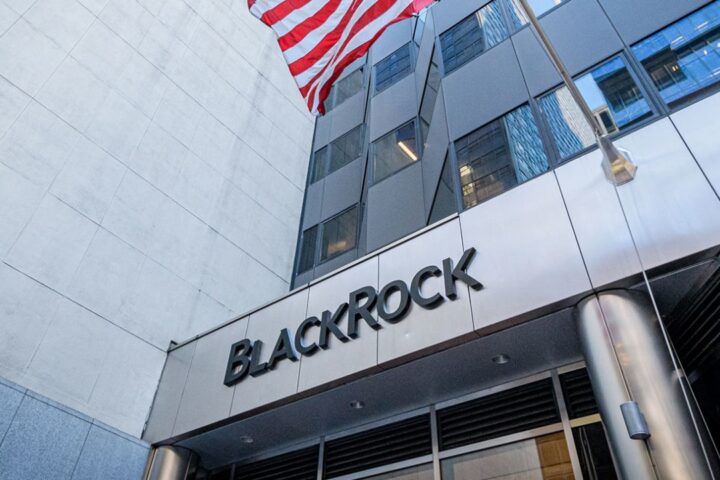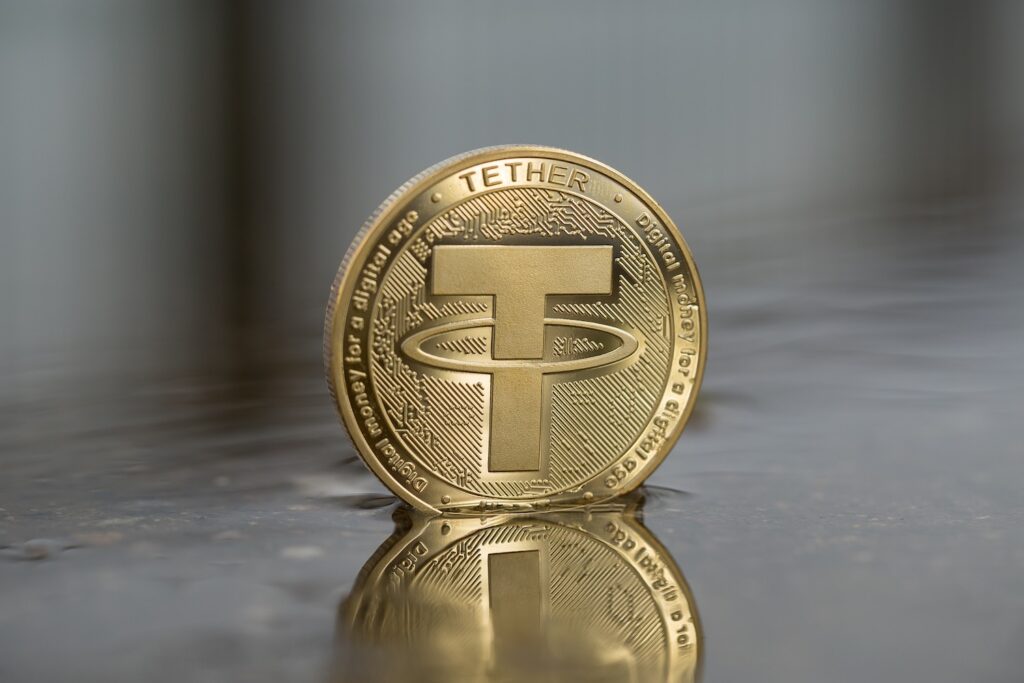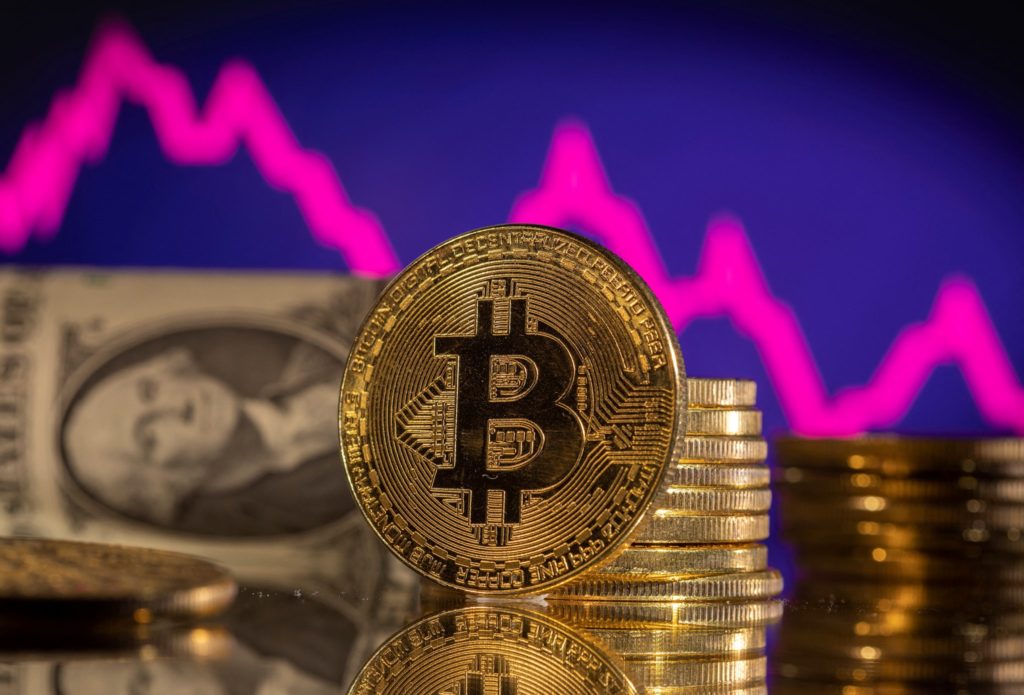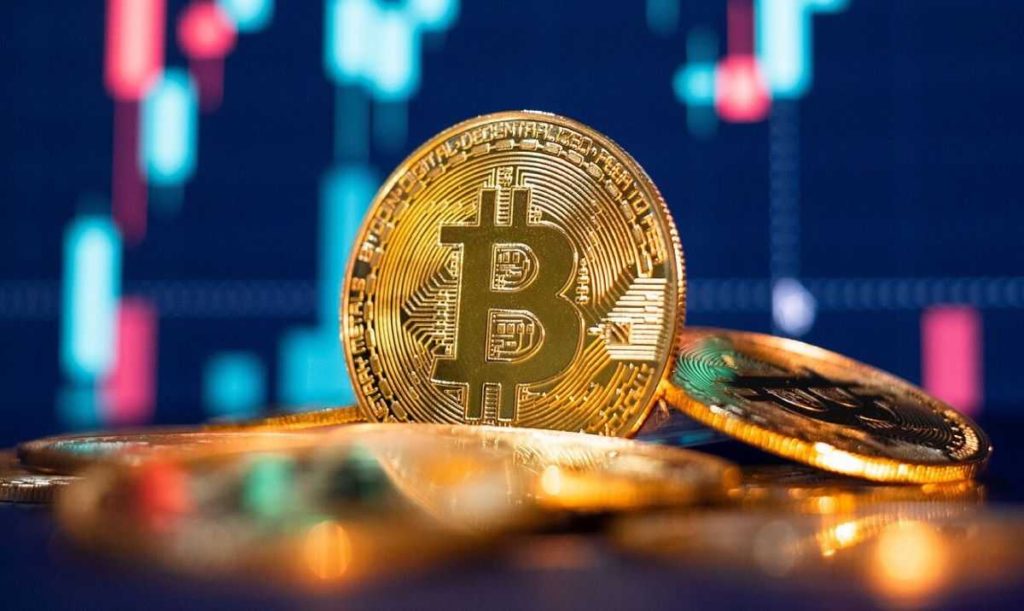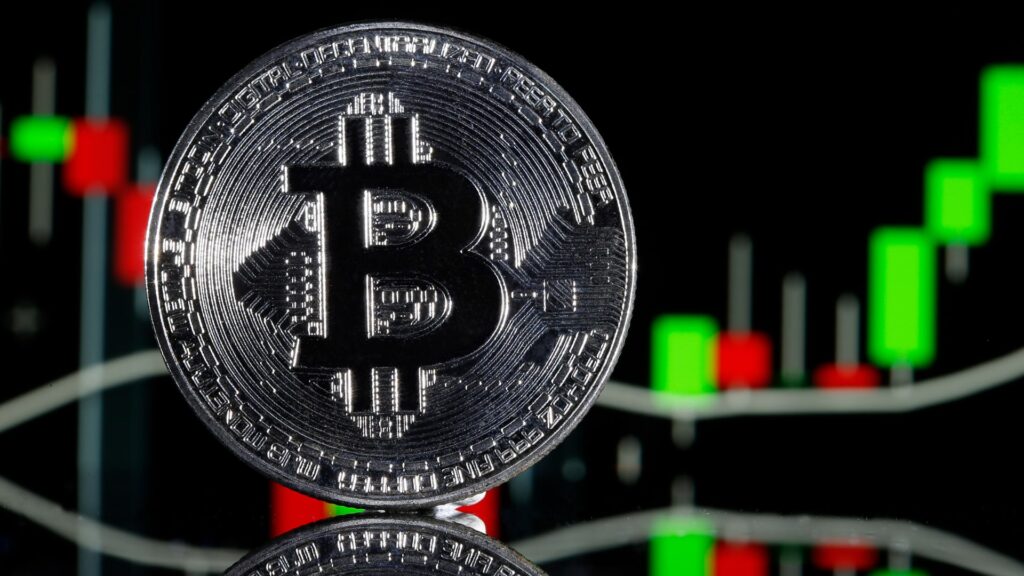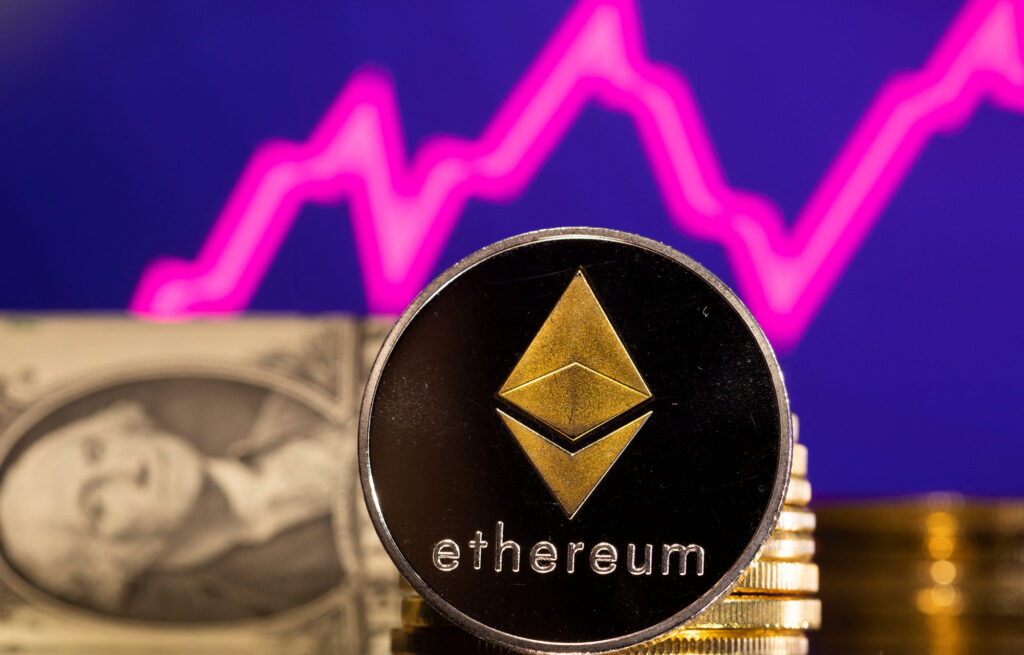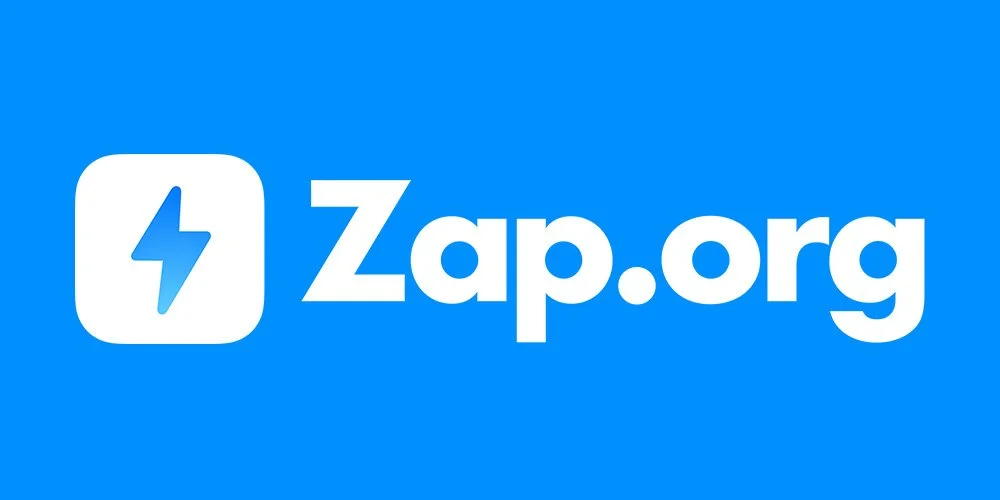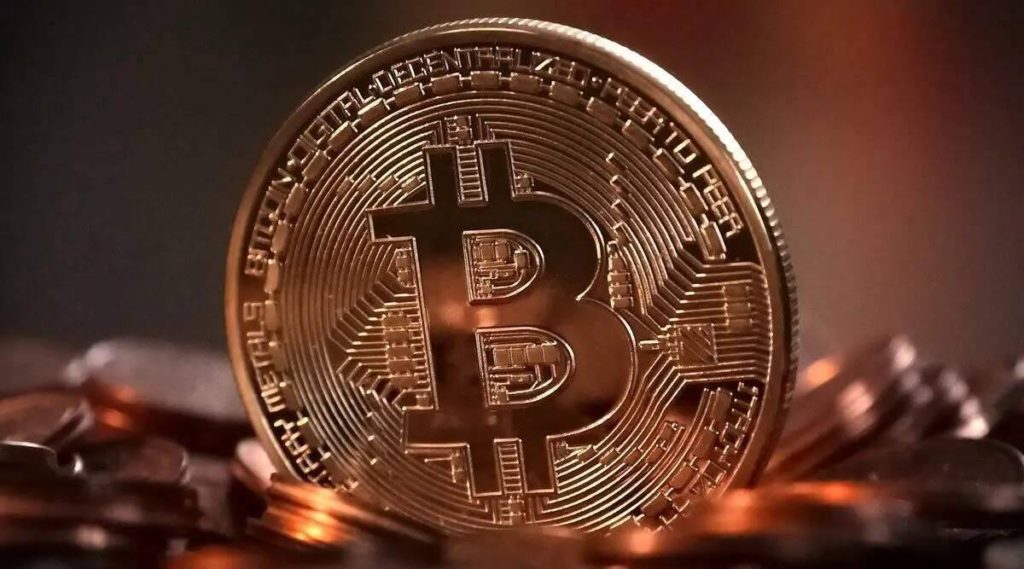Stablecoin issuer Tether declined to give a definitive response regarding whether it would terminate its support for the Tron network following its competitor Circle’s cessation of stablecoin minting on the blockchain on Tuesday, February 20.
“Tether tokens are issued on several blockchains, which are simply transport layers for such tokens,” Tether stated in a communication with Cointelegraph when questioned about Circle and whether Tether was contemplating a similar action.
“Tether retains the ability to freeze transactions on each directly supported transport layer to accomplish its compliance duties.
Nevertheless, Tether actively monitors the safety of each one of the supported transport layers to ensure the highest standards for our community,” the firm articulated.
Tether holds the position as the largest stablecoin with a market capitalization of $97.7 billion, while Circle’s USD Coin trails at $28 billion, as per CoinGecko data.
The Tron network accommodates over 51.8 billion USDT, representing over half of the nearly 101 billion USDT tokens issued across multiple blockchains, according to Tether’s transparency report dated February 21.
Moreover, an additional $76.2 million is allocated to provide near-term liquidity for the token on the Tron network.
Tether’s remarks were prompted by an announcement from Circle on February 20, disclosing the immediate cessation of USDC minting on Tron and the gradual withdrawal of support for the network, asserting that the decision aligns with “efforts to ensure that USDC remains trusted, transparent, and safe.”
In January, a United Nations report suggested that “USDT on the Tron blockchain has become a preferred choice” for cyber fraud and money laundering in Southeast Asia owing to the “ease, anonymity, and low fees of its transactions.”
Tether refuted the report, stating that the UN overlooked USDT’s traceability and the firm’s history of collaboration with law enforcement.
It highlighted that it froze over $300 million worth of USDT used in illicit activities “within the last few months,” including $225 million frozen in November 2023 as part of a United States investigation into a Southeast Asian human trafficking syndicate.
Ethics watchdog group Campaign for Accountability penned a letter to United States senators in November 2023, alleging Tron “has been named in multiple international law enforcement actions involving billions of dollars in transactions by alleged organised crime groups and sanctioned entities.”
The U.S. Securities and Exchange Commission initiated legal action against the Tron Foundation and founder Justin Sun in March 2023, alleging they offered unregistered securities and engaged in manipulative trading, contentions that Sun denies.
Bitcoin is poised for a downturn around its upcoming block subsidy halving, though the exact timing remains uncertain.
Renowned trader and analyst Rekt Capital, in his latest YouTube presentation on February 20, forecasted BTC’s price trajectory mirroring the bullish trends of 2016 and 2020.
The deliberation revolves around the timing of the 2024 “pre-halving retrace” for Bitcoin, which has lingered within a narrow band for over a week, encountering resistance around $52,000.
Despite dampened sentiment and subdued performance of alternative cryptocurrencies, seasoned market observers maintain a positive outlook.
Drawing from historical patterns leading to all-time highs, Rekt Capital identified common phases in bull market formations.
He elucidated, “In the past, a macro downtrend break always precedes upside going into the halving. Then we have a pre-halving retrace and then a post-halving reaccumulation period and then parabolic price action toward new all-time highs.”
A chart accompanying the analysis depicted BTC/USD breaking its initial downward trendline, only to encounter resistance from a previously established zone.
The absence of breaking through and subsequently retesting this zone as support — the “pre-halving retrace” phase — characterises the current state of affairs in 2024.
READ MORE: Ethena Labs’ High Yield Stablecoin Sparks Investor Concerns in Crypto Community
Rekt Capital asserted, “We’re going to have the same thing in this cycle as well.” The focal point for the anticipated pre-halving pullback resides around $45,000, as corroborated by data from Cointelegraph Markets Pro and TradingView.
The query persists, “Are we going to retest this resistance this month in the pre-halving period?” as the analyst highlighted the recurrent failure to do so in preceding pre-halving periods.
Earlier assessments by Rekt Capital indicated Bitcoin’s complete immersion in its pre-halving surge, with recent observations suggesting accelerated key price developments compared to previous cycles.
Turning to current market dynamics, others expressed reluctance to adopt a bearish stance amidst the ongoing lateral movements.
Caleb Franzen, founder of research platform Cubic Analytics, remarked on Bitcoin’s steadfast trading range, observing minimal deviation over the past week.
Similarly, analyst Matthew Hyland underscored the significance of the 0.618 Fibonacci retracement level from all-time highs, cautioning that a breach below $49,000 could alter the outlook, while consolidation within an upward trajectory favours its continuity.
The Hong Kong Securities and Futures Commission (SFC) has been inundated with crypto license applications, totaling 18 from various local and global players over a span of two months.
Among the applicants are prominent names like Huobi HK, Crypto.com, OKX, Bybit, and DFX Labs.
To meet the stringent licensing requirements, applicants must undergo thorough due diligence checks, including comprehensive financial audits, which can be a costly endeavor.
It’s reported that Web3 firms are spending up to $25 million to ensure compliance and build robust applications for these licenses.
The clarity provided by Hong Kong’s regulatory framework regarding exchange licensing has not only attracted crypto exchanges but also traditional brokerages like Tiger Brokers.
READ MORE: Zap Protocol – How Can You Buy ZAP and is it a Good Investment?
Tiger Brokers recently expanded its SFC license to incorporate crypto trading, acknowledging the growing significance of cryptocurrencies as an asset class and leveraging its fintech expertise to integrate Web3 technology.
Additionally, Harvest Hong Kong, a major Chinese fund manager, submitted the first application for a spot Bitcoin exchange-traded fund (ETF) on Jan. 26, marking a significant development in Hong Kong’s crypto landscape.
In terms of security measures, Hong Kong has imposed a minimum insurance requirement of 50% for licensed crypto exchanges to safeguard customers’ assets.
Notably, OSL Exchange has taken steps to exceed this requirement by partnering with Canopius, a Lloyd’s of London underwriter syndicate, to secure an insurance policy covering 95% of its users’ assets over a two-year period.
This underscores the increasing focus on security and risk mitigation within the crypto industry.
Bitcoin (BTC) soared to a fresh 2024 peak of £53,019 on February 20, only to sharply decline to £50,000 on select exchanges.
Traders attribute consistent inflows of spot BTC ETFs and the forthcoming supply halving event as pivotal drivers behind this surge, with BTC currently trading above £52,100 at the time of writing.
Let’s delve into the primary factors underpinning today’s volatility in the Bitcoin price.
Bitcoin futures’ open interest (OI) has surged to a new yearly pinnacle, reminiscent of levels last witnessed in November 2021.
This surge suggests heightened trading activity surrounding the foremost cryptocurrency by market capitalisation.
Data from cryptocurrency futures trading and information platform Coinglass reveals that total OI for BTC futures reached £22.69 billion on February 20, the highest since November 11, 2021, closely approaching the peak of £23 billion recorded at that time.
Bitcoin futures OI surged by over 30% in 2023, correlating with Bitcoin’s 23% year-to-date surge to £53,000, reaching levels last observed in December 2021.
Open interest serves as a gauge of the overall value of all unsettled Bitcoin futures contracts across exchanges, with an uptick indicating increased market activity and trader sentiment surrounding the pioneering cryptocurrency.
Investor sentiment remains buoyant, buoyed by rising inflows to spot BTC ETFs despite outflows from gold ETFs on the rise.
Bitcoin has surpassed the £49,000 peak reached subsequent to the January 10 approval of spot Bitcoin ETFs by the U.S. Securities and Exchange Commission.
READ MORE: Ether Surges Past $3,000 Mark for First Time in Nearly Two Years
Data from Farside Investors reveals that £4.91 billion has flooded into Bitcoin ETFs within six weeks since trading commenced on January 11.
The total weekly inflows into the newly issued spot Bitcoin ETFs reached £2.5 billion last week, as per CoinShares Digital Asset Fund Flows Weekly Report.
CoinShares analyst James Butterfill remarked, “These inflows, alongside recent positive price movements, have propelled total assets under management (AuM) to £67 billion, marking the highest level since December 2021.”
On February 17, financial commentator Tedtalks Macro underscored the steady rise in net inflow to spot Bitcoin ETFs, averaging £182 million per day, asserting,
“Post-halving we only need ~£25M of net inflows to spot ETFs per day, to offset the miner production.”
The impending Bitcoin halving, anticipated to slash miners’ rewards by 50%, is also projected to significantly stoke investors’ interest in BTC.
Historically, the halving event has preceded Bitcoin embarking on a parabolic uptrend in the months post-event.
Starknet, the Ethereum layer-2 scaling protocol, commenced the distribution of its native network token on 20th February, with millions of tokens claimed upon the launch of the provisions portal.
Real-time data monitoring the claims indicated that eligible users had acquired more than 45 million STRK tokens within the initial 90 minutes of the allocation.
The token began trading on several major exchanges.
STRK was traded at over £5 following its listing on Binance and exceeded £3 on KuCoin as the tokens permeated the broader cryptocurrency ecosystem.
CoinMarketCap data revealed STRK trading between £3 and £4, with its market capitalisation valued at over £2.1 billion.
More than 1.3 million wallets are eligible to claim Starknet’s native token, including those of Ethereum solo and liquid stakers, Starknet developers and users, as well as projects and developers from outside the Web3 ecosystem.
The Starknet Foundation has released an overview of its token provision alongside the launch of a dedicated portal that enables individuals to verify their eligibility and acquire STRK tokens.
Over 700 million STRK tokens are poised to be allocated across nine categories and will be utilised for governance and transaction fees. Starknet intends to introduce staking of STRK tokens in the future.
READ MORE: Australian Federal Police Officer Accused of Wiping Bitcoin Wallet at Crime Scene
Starknet is among Ethereum’s principal L2s that pioneered zero-knowledge (ZK) rollup technology.
The protocol facilitates the processing of transactions and smart contract functions off-chain, with cryptographic proofs submitted to Ethereum to access the security guarantees of its underlying blockchain.
The layer-2 scaling protocol has also addressed concerns raised by Starknet and Ethereum community members regarding the eligibility criteria for the STRK airdrop.
Starknet’s active users surged in recent weeks as prospective STRK recipients and airdrop farmers sought eligibility for the campaign.
A statement from Starknet subsequent to the launch of the provisions portal acknowledged feedback from community members and network users who felt “overlooked due to certain Provisions criteria.”
The Starknet Foundation affirmed that it was working on a resolution for users who were not deemed eligible.
The broader cryptocurrency ecosystem has also been cautioned to remain vigilant against scams and malicious links.
Bitcoin holdings on the Coinbase crypto exchange have dwindled to their lowest point in nine years as users relocate a substantial portion of their holdings away from the exchange.
According to a report from CryptoQuant, whales shifted 18,000 Bitcoin, valued at nearly $1 billion, away from Coinbase over the weekend, with transfer amounts ranging from $45 million to $171 million.
The public order book of Coinbase presently contains approximately 394,000 BTC, estimated to be valued at $20.5 billion.
The movement of BTC holdings away from centralised exchanges by whales is viewed as a positive indicator as it reduces the availability of Bitcoin for sale.
Nonetheless, opinions on social media regarding the nature of these transfers are mixed.
Some speculate that the funds are being transferred to custodial wallets in anticipation of a price surge, particularly with the forthcoming Bitcoin halving just two months away, causing a supply shock.
Conversely, some believe that the transferred funds might be utilised for liquidity in over-the-counter (OTC) trades.
Others suggest that the funds might be transferred to a different custodian and that these are not individual withdrawals, remarking that the majority of assets held on these exchanges do not actually belong to them, thus the actual withdrawal figure should be much lower.
READ MORE: Australian Federal Police Officer Accused of Wiping Bitcoin Wallet at Crime Scene
With each Bitcoin halving cycle, the influx of new BTC into the market is halved, leading to a supply squeeze as demand rises.
The next Bitcoin halving is scheduled for April at a block height of 740,000, reducing the block reward from 6.25 BTC to 3.125 BTC per mined block.
This halving coincides with significant institutional demand, evidenced by the approval of 11 spot Bitcoin exchange-traded funds (ETFs) in the United States in January.
Presently, approximately 900 BTC are mined daily, while the daily net inflows of Bitcoin ETFs amount to around half a billion dollars, equivalent to about 9,650 BTC, notwithstanding Grayscale registering nearly $100 million in daily outflows.
Following the April halving, the daily production of BTC will decrease to about 450 BTC, while institutional demand is expected to persist.
This significant disparity between supply and demand historically favours a bullish trajectory for the Bitcoin price, often resulting in new all-time highs within a year of the halving.
Bitcoin is currently trading at around $52,000, marking its highest level since December 2021, albeit a 25% decrease from its peak of approximately $69,000.
Ether’s price breached the £3,000 mark on February 20th for the first time since April 2022.
From a value of £2,881 on February 19th, Ether surged over 4% in the past 24 hours and 74% over the last year, reaching a year-to-date peak at £3,000.97 on Binance at 13:45 UTC, as per CoinMarketCap data.
The surge in Ether’s price coincides with anticipation surrounding the potential approval of a spot Ether exchange-traded fund (ETF) by the United States Securities and Exchange Commission (SEC) and the upcoming implementation of Ethereum Improvement Proposal (EIP) 4844 through the Dencun upgrade.
According to current odds from Polymarket, there’s a 45% likelihood of the SEC approving a spot Ether ETF by May 31st.
Bernstein, a wealth management firm, recently suggested that ETH might be the only other cryptocurrency to secure an ETF spot in the United States.
“Ethereum with its staking yield dynamics, environmentally friendly design, and institutional utility to build new financial markets, is well positioned for mainstream institutional adoption,” analysts Gautam Chhugani and Mahika Sapra reportedly wrote in a note on Feb. 19.
Meanwhile, Bloomberg’s Eric Balchunas forecasts a 70% chance of approval, suggesting a positive outlook for Ether ETFs amid regulatory delays.
READ MORE: Coinbase Assures Genesis GBTC Sell-Off Won’t Rattle Crypto Markets
The last time Ether exceeded £3,000 was almost 22 months ago, on May 4, 2022, when it hit a high of £2,966 before entering a prolonged bear market that saw its price plummet to £883 in June 2022.
ETH’s recent surge may also be linked to the much-anticipated Dencun upgrade of the network.
The Dencun upgrade, scheduled for March 13, is expected to incorporate several EIPs, including EIP-4844, which introduces proto-danksharding.
This upgrade streamlines the transaction process by storing some data off the blockchain, thereby accelerating transactions and reducing costs.
Data from CoinGlass indicates a growing open interest (OI) in Ether futures markets, reaching a record £10.19 billion, affirming the current volatility in ETH’s price.
Many market participants anticipate the recent bullish momentum to persist amidst any developments regarding the approval of a spot Ether ETF and potential movements in the broader cryptocurrency market.
Zap Protocol stands as a notable endeavor within the blockchain and cryptocurrency landscape, aiming to foster innovation and accessibility in decentralized finance (DeFi) and beyond. Its ambition is to streamline the integration and utilization of smart contracts and decentralized applications (dApps) across various industries by providing an open platform for the creation and deployment of oracle services.
These services are vital for dApps to interact seamlessly with real-world data and external systems, bridging the gap between blockchain technology and practical, real-world applications.
Overview of Zap Protocol
Zap Protocol offers a multifaceted infrastructure designed to enhance the functionality and interoperability of smart contracts by enabling them to securely and efficiently access a wide range of external data sources and APIs. This is achieved through the use of oracles, which are entities that fetch and verify external data for smart contracts. In the context of Zap Protocol, these oracles are decentralized, thus ensuring that the data they provide is reliable, tamper-proof, and transparent.
The protocol leverages the power of blockchain technology to create a decentralized marketplace for data feeds and other services that can be used by smart contracts. This marketplace allows data providers to list their services, which can range from financial data, weather information, to various other types of external data. Smart contract developers can then easily access and integrate these services into their applications, enabling them to create more complex, responsive, and useful dApps.
Key Features and Benefits
- Decentralization: By operating on a decentralized network, Zap Protocol ensures that the data provided by oracles is not controlled by any single entity, which significantly reduces the risk of manipulation and increases trust in the data used by smart contracts.
- Flexibility: The protocol supports a wide range of data types and sources, making it a versatile tool for developers looking to create dApps for various industries and purposes.
- Security: The use of blockchain technology ensures that all transactions and data exchanges on the Zap Protocol are secure and immutable, providing a reliable foundation for the development of dApps.
- Tokenization: Zap Protocol introduces its native token, ZAP, which is used within the ecosystem for transactions, staking, and governance. This tokenization aspect facilitates a self-sustaining economy where users are incentivized to participate and contribute to the network.
Use Cases
The applications of Zap Protocol are vast and diverse, reflecting its potential to revolutionize how dApps interact with the real world. Some notable use cases include:
- Finance: Integration of real-time financial data into DeFi platforms for accurate and decentralized financial services.
- Insurance: Automated, blockchain-based insurance policies that trigger payments based on verifiable, real-world data.
- Supply Chain Management: Transparent tracking of goods as they move through the supply chain, with data integrity ensured by decentralized oracles.
- Gaming: Creation of dynamic, data-driven gaming experiences that can respond to real-world events and data.
The ZAP Token
The ZAP token is central to the functioning of the Zap Protocol ecosystem. It serves multiple purposes, including paying for data feeds, staking to participate in the governance of the protocol, and incentivizing data providers and users to maintain and enhance the network’s value and security.
Where to Buy ZAP Tokens
ZAP tokens can be purchased on several cryptocurrency exchanges, both centralized and decentralized. Availability can vary based on the region and the regulatory environment, so it’s essential to check the most current listings. Some of the platforms where ZAP tokens might be available include:
- Centralized Exchanges (CEXs): ZAP is listed for live trading on numerous CEXs, including Poloniex and Bitrue.
- Decentralized Exchanges (DEXs): For those preferring a more decentralized approach, platforms such as Uniswap, SushiSwap, and 1inch offer the ability to trade ZAP tokens directly from a cryptocurrency wallet without the need for an intermediary.
- Crypto Wallets: Some crypto wallets offer integrated services that allow users to buy tokens like ZAP directly within the wallet interface. This option combines convenience with the security of not having to transfer tokens between a wallet and an exchange.
- P2P Platforms: Peer-to-peer platforms might also offer ZAP tokens for trade, allowing for direct transactions between individuals without the need for a centralized platform.
Bitcoin re-entered the spotlight within an intraday trading span by the close of the week on February 18th, with bullish trends gaining ground during weekend trades.
Data sourced from Cointelegraph Markets Pro and TradingView revealed that at $52,000, Bitcoin’s price consolidation reached a pivotal juncture.
The primary cryptocurrency experienced a downturn to $50,680 on Bitstamp a day earlier, marking its lowest levels in several days.
However, a swift recovery ensued, adding nearly $1,500 within hours. As of the time of writing, there hadn’t been a fresh retesting of these lows.
Analysing the week’s developments, prominent trader Skew observed a shift in trader behaviour during the latter half of the Wall Street trading week.
He noted a decline in spot buying towards the weekend, with “mostly taker driven dips & bounces since.”
“So far seeing some spot buyers return here with binance spot leading,” he remarked on the day.
Simultaneously, burgeoning open interest (OI) on CME Group’s Bitcoin futures markets, reaching a record $6.8 billion, hinted at impending volatility, according to data from monitoring resource CoinGlass.
However, discussing open interest more broadly, popular trader Daan Crypto Trades highlighted a discrepancy when denominated in BTC.
“This +100% rally from October has been healthy in terms of leverage imo,” he argued.
READ MORE: OpenAI’s Valuation Soars to £80 Billion as Company Explores New Ventures and Partnerships
“Funding has mostly kept it’s neutral rate and open interest denominated in $BTC is lower. In USD value of course it has gone up during this time as the underlying asset (BTC) went up in value.”
Skew further emphasised that bulls must maintain upward momentum in Bitcoin’s relative strength index (RSI) on 4-hour timeframes by the weekly close.
The 21-period exponential moving average (EMA), currently positioned at $51,500, also carried significance.
“In terms of spot flows around $52K – $53K area, notable spot selling into bounces which is often the case with profit taking,” he explained about the landscape on Binance.
“Key from here with current uptrend is seeing sufficient spot demand on dips, mostly seen as absorption at the lows where limit buying outweighs taker selling.”
Fellow trader and analyst Matthew Hyland highlighted $49,000 as the critical threshold to defend for the close.
Ethereum solo stakers and network nodes are poised to reap rewards from the incorporation of Verkle trees, as stated by Vitalik Buterin.
The Ethereum co-founder extolled the advantages of this technological enhancement to Ethereum’s protocol in a recent post.
Verkle trees are expected to facilitate “stateless validator clients,” with Buterin highlighting their capability to enable staking nodes to operate with “near-zero hard disk space and sync almost instantly.”
Buterin had previously outlined a five-stage, incremental process aimed at steering the smart contract blockchain towards what he termed as the endgame of Ethereum’s development.
This came subsequent to the eagerly awaited activation of the Beacon Chain, which marked Ethereum’s transition to proof-of-stake consensus in September 2022.
Verkle trees constitute a component of the roadmap, as shared by Buterin in late 2022.
Five keywords encapsulated the successive development phases: The Merge, Surge, Verge, Purge, and Splurge delineate the technical intricacies of various developmental milestones.
Verkle trees fall under the Verge category, representing the third phase of Ethereum’s developmental trajectory.
This phase involves the introduction of Verkle trees, which are set to enhance data storage efficiency and node size. Buterin elucidated the technical specifics of Verkle trees in the Ethereum Improvement Proposal documentation published in 2022.
READ MORE: Jupiter Asset Management Withdraws Investment in Ripple XRP ETP
Verkle trees serve a similar purpose to Merkle trees, which consolidate all transactions within a block and generate proof of the entire dataset for a user seeking to verify its authenticity:
“The key property that Verkle Trees provide, however, is that they are much more efficient in proof size.”
While Verkle trees utilise structures akin to Merkle trees, a crucial distinction lies in nodes employing a specific hash type known as a vector commitment, which is transmitted to sub-nodes.
Vector commitments are poised to yield substantial long-term advantages to the Ethereum network.
The primary benefit of Verkle trees is to facilitate Ethereum’s attainment of statelessness, whereby nodes verifying blocks would no longer necessitate storing Ethereum’s state.
Verkle trees enable smaller proof sizes, which can be accommodated within each block of the Ethereum blockchain. Consequently, nodes can verify any block using the data contained therein.
The implementation of Verkle trees is anticipated to usher in a plethora of new functionalities, including reduced hardware requisites for operating Ethereum nodes, thus enhancing the network’s decentralisation.
Moreover, new nodes can swiftly join the network, with the capability to promptly synchronise with it.
The development of Verkle trees is ongoing, and integrating them into the Ethereum protocol will necessitate several modifications.
These include a novel data structure to preserve the network’s state, a revamped gas accounting model, a strategy for migrating Ethereum’s state from Merkle to Verkle trees, novel cryptography primitives, and new block-level fields.

